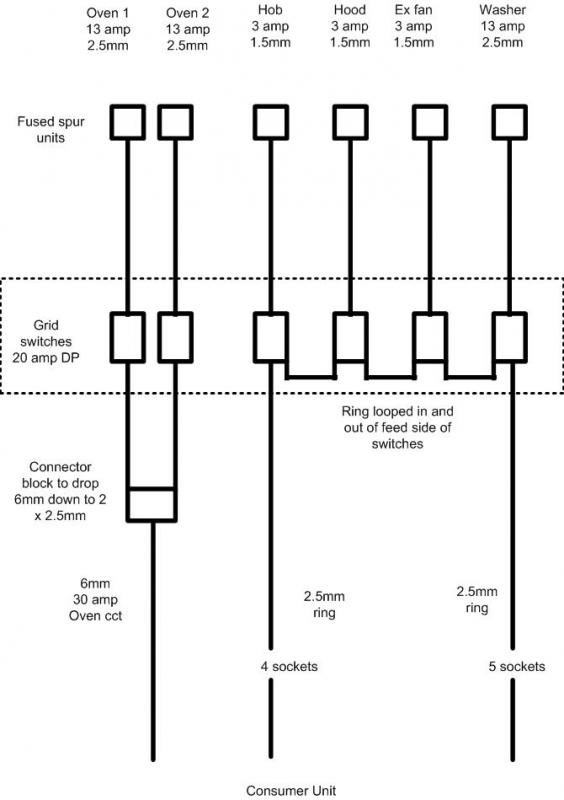A few points:
You are allowed to spur only once off any socket on a ring main.
If you so wish you could put in as many Junction boxes on a ring main as you liked and spurred off each of those junction boxes once each. (Not adviseable but technically nothing wrong with it.
If you Connect a Switched Fused Spur into the ring you can add as many sockets on the outgoing (load) side of the spur like, as a radial. Though when you do this, the radial can only pull as much as the fuse in the spur will allow (ex. 13A)
You are allowed to spur only once off any socket on a ring main.
If you so wish you could put in as many Junction boxes on a ring main as you liked and spurred off each of those junction boxes once each. (Not adviseable but technically nothing wrong with it.
If you Connect a Switched Fused Spur into the ring you can add as many sockets on the outgoing (load) side of the spur like, as a radial. Though when you do this, the radial can only pull as much as the fuse in the spur will allow (ex. 13A)


